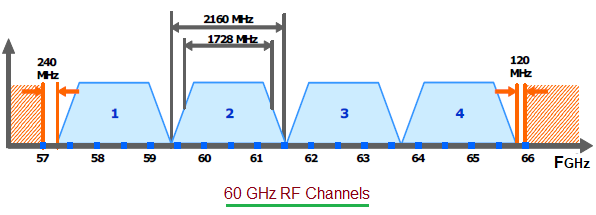Products Category
- FM Transmitter
- 0-50w 50w-1000w 2kw-10kw 10kw+
- TV Transmitter
- 0-50w 50-1kw 2kw-10kw
- FM Antenna
- TV Antenna
- Antenna Accessory
- Cable Connector Power Splitter Dummy Load
- RF Transistor
- Power Supply
- Audio Equipments
- DTV Front End Equipment
- Link System
- STL system Microwave Link system
- FM Radio
- Power Meter
- Other Products
- Special for Coronavirus
Products Tags
Fmuser Sites
- es.fmuser.net
- it.fmuser.net
- fr.fmuser.net
- de.fmuser.net
- af.fmuser.net ->Afrikaans
- sq.fmuser.net ->Albanian
- ar.fmuser.net ->Arabic
- hy.fmuser.net ->Armenian
- az.fmuser.net ->Azerbaijani
- eu.fmuser.net ->Basque
- be.fmuser.net ->Belarusian
- bg.fmuser.net ->Bulgarian
- ca.fmuser.net ->Catalan
- zh-CN.fmuser.net ->Chinese (Simplified)
- zh-TW.fmuser.net ->Chinese (Traditional)
- hr.fmuser.net ->Croatian
- cs.fmuser.net ->Czech
- da.fmuser.net ->Danish
- nl.fmuser.net ->Dutch
- et.fmuser.net ->Estonian
- tl.fmuser.net ->Filipino
- fi.fmuser.net ->Finnish
- fr.fmuser.net ->French
- gl.fmuser.net ->Galician
- ka.fmuser.net ->Georgian
- de.fmuser.net ->German
- el.fmuser.net ->Greek
- ht.fmuser.net ->Haitian Creole
- iw.fmuser.net ->Hebrew
- hi.fmuser.net ->Hindi
- hu.fmuser.net ->Hungarian
- is.fmuser.net ->Icelandic
- id.fmuser.net ->Indonesian
- ga.fmuser.net ->Irish
- it.fmuser.net ->Italian
- ja.fmuser.net ->Japanese
- ko.fmuser.net ->Korean
- lv.fmuser.net ->Latvian
- lt.fmuser.net ->Lithuanian
- mk.fmuser.net ->Macedonian
- ms.fmuser.net ->Malay
- mt.fmuser.net ->Maltese
- no.fmuser.net ->Norwegian
- fa.fmuser.net ->Persian
- pl.fmuser.net ->Polish
- pt.fmuser.net ->Portuguese
- ro.fmuser.net ->Romanian
- ru.fmuser.net ->Russian
- sr.fmuser.net ->Serbian
- sk.fmuser.net ->Slovak
- sl.fmuser.net ->Slovenian
- es.fmuser.net ->Spanish
- sw.fmuser.net ->Swahili
- sv.fmuser.net ->Swedish
- th.fmuser.net ->Thai
- tr.fmuser.net ->Turkish
- uk.fmuser.net ->Ukrainian
- ur.fmuser.net ->Urdu
- vi.fmuser.net ->Vietnamese
- cy.fmuser.net ->Welsh
- yi.fmuser.net ->Yiddish
What is the difference between an RF channel and a virtual channel?

The RF channel is the channel that the TV station uses to broadcast its signal. Before the conversion to digital, TV stations were normally identified by their channel number, and most people knew that a particular network was on a specific TV channel. While analog broadcasting was being phased out and all TV stations were converting to digital broadcasting, it was necessary for the TV stations to continue to broadcast their analog signals on their original RF channels, and also broadcast their digital signals on a different RF channel.
However, since the TV station used their broadcast channel as part of their identification, they wanted to keep using the same channel number. To allow this to happen, the new digital television broadcasting standards (ATSC) provided TV stations the ability to continue to use their original channel number and also tell the TV set to tune to the new RF broadcast channel when their virtual channel number was selected.
The original channel number is called the virtual channel number, and it will be followed by a period and a second number (3.1, 7.1, etc.).
One of the benefits of converting to digital for the TV stations is that they now have the ability to transmit more than one program at the same time on the same RF channel. The number of additional channels they can broadcast is determined by the resolution of the program (SD vs. HD, text only, music only, etc.). The second number in their virtual channel number indicates that one of the additional programming sources from the same TV station is being viewed (10.2, 10.3, 10.4, etc.).
When selecting an antenna, it is important to understand the difference between the RF broadcast channel and the virtual channel. Antennas are designed to receive specific ranges of RF channels, and the antenna needs to be selected for the RF channel you wish to receive.
TV stations broadcast in two broad frequency ranges, called VHF and UHF. RF channels 2 through 13 are considered VHF, and RF channels 14 through 51 are considered UHF. In order to pick up the channels, the antenna has to be designed for the correct frequency range. It is very common today to find that TV stations using virtual channels 2 through 13 are actually using RF broadcast channels in the UHF range.
Although not as common, some TV stations using virtual channels 14 through 51 are actually transmitting in the VHF range. An antenna designed for only UHF channels will not work effectively for RF broadcast channels in the VHF range, and an antenna designed for only VHF channels will not work effectively for RF broadcast channels in the UHF range.

